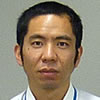The importance of mechanical signals on homeostasis of skeletal muscle and peripheral circulation. – Publicly Invited Research 2018-2019
- A01 Ogura
- A01 H. Takahashi
- A01 S. Takahashi
- A01 Michiue
- A01 Hinoi
- A01 Tsumoto
- A01 Nikawa
- A01 Chatani
- A01 Kawakami
- A01 Akiyama
- A01 Tomita
| Research Subject | The importance of mechanical signals on homeostasis of skeletal muscle and peripheral circulation. |
|---|---|
| Research Group Leader |
 Associate Professor, Molecular Pharmacology, Graduate School of Medicine, Shinshu University Website http:// |
| Research Collaborator(s) |
|
One of the difficulties for survival in space is the loss of stress on muscular system organs, which leads to muscle atrophy. Even on Earth, the condition of being bedridden is known to cause muscle atrophy and immunodeficiency. Since our body has adopted the life with gravity on the earth, homeostasis of skeletal muscle and its surrounding circulation system would be supported by mechanical signals originated from the gravity. To reveal the importance of input of mechanical signals and how those are transduced to maintatin whole body homeostasis, we will study how muscular cells of skeletal and vascular smooth muscle sense mechanical signals from physical activities and contribute to homeostasis, and aim to develop novel interventions to mimic kinesitherapy.
We have been revealed that the control of the production of reactive oxygen species (ROS) is the most important mechanism regarding the importance of mechanical signals on muscular cells. During the first two years in “Living in space”, we identified that the functional coupling of nonselective cation channel TRPC3 and NADPH oxidase 2 (Nox2) plays a critical role in cardiomyocyte atrophy and stiffening. In this research, we will further analyze the universality of the importance of TRPC3-Nox2 coupling in skeletal and vascular smooth muscle cells and reveal the comprehensive mechanism of atrophy of skeletal muscle tissue by the loss of gravitational mechanical signals.
